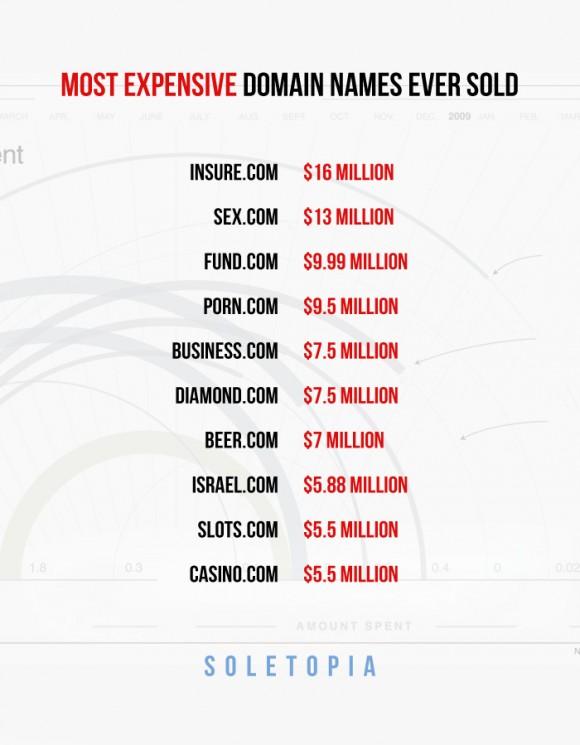Table of Contents
- Understanding the Domain Flipping Market Landscape
- Identifying Valuable Domains for Profitable Resale
- Strategies for Effective Domain Acquisition
- Marketing Your Domains to Attract Buyers
- Navigating Negotiations and Closing Sales Successfully
- Q&A
- The Conclusion
Understanding the Domain Flipping Market Landscape
The domain flipping market operates within a dynamic ecosystem driven by changing technology trends, consumer behavior, and business needs. Investors in this space seek undervalued domains to purchase, enhance, and resell at a profit. A successful flipper must understand several key factors that influence the domain’s value and sale potential, including domain age, keyword relevance, and market demand. The right combination of these elements can significantly elevate a domain’s worth.
Market Research is fundamental for anyone looking to thrive in domain flipping. By analyzing recent sales, current trends, and future forecasts, flippers can make informed decisions. Here are some essential areas to explore in your research:
- Keyword Research: Identify high-demand keywords related to specific niches.
- Competitor Analysis: Assess the strategies and price points of successful domain flippers.
- Historical Sales Data: Use platforms like Flippa or Sedo to review past domain sales and price trends.
Additionally, understanding pricing strategies is crucial for setting competitive yet profitable prices for your domains. Factors influencing these strategies include:
| Factor | Description |
|---|---|
| Domain Length | Short domains are generally more valuable due to their memorability. |
| Extension Type | Popular TLDs like .com often fetch higher prices than lesser-used ones. |
| SEO Potential | A domain with strong SEO metrics can attract higher bids. |


Identifying Valuable Domains for Profitable Resale
When diving into the art of domain flipping, the essential first step is the identification of domains that have the potential for profitable resale. This involves a keen eye for recognizing traits that can make a domain not just desirable, but marketable. Here are some key attributes to consider:
- Short and Memorable: Domains that are concise and easy to remember tend to have higher resale value. Aim for names that can be quickly typed and recalled.
- Keyword-Rich: Integrating relevant keywords into domain names can boost their attractiveness to businesses looking for SEO benefits.
- Extension Matters: While .com is king, valuable domains can also be found with .net, .org, or trendy newer extensions like .io, especially in tech startups.
Analyzing market trends can significantly enhance your domain selection process. Tools like Google Trends and keyword research platforms can provide insights into what industries are flourishing and which keywords are in demand. To further refine your search, consider maintaining a simple table to track potential domains and their corresponding attributes:
| Domain Name | Keywords | Extension | Market Potential |
|---|---|---|---|
| EcoFriendlyLiving.com | Eco, Green, Living | .com | High |
| TechInnovation.io | Tech, Innovation | .io | Medium |
| TravelLuxury.net | Travel, Luxury | .net | Low |
Recognizing trends isn’t just about current fads; it also involves anticipating future needs. Stay updated with industry news, emerging businesses, and the shifts in consumer behavior. Networking with other domain flippers and participating in online communities can provide invaluable insights and leads. Remember, the most profitable domains are often right under your nose; it’s a matter of identifying them before others do.


Strategies for Effective Domain Acquisition
When entering the domain flipping market, having a strategic approach to acquiring domains can make all the difference. Focusing on domains with potential can significantly increase your chance of a profitable flip. Here are a few key strategies to consider:
- Keyword-Rich Domains: Look for domains that contain popular keywords relevant to high-demand niches. These domains are often more appealing to potential buyers and can command higher prices.
- Brandability: Seek out short, memorable domains that can easily be rebranded. A catchy name can draw attention and increase desirability, making your flip more profitable.
- Expired Domains: Research expired domains with a good backlink profile. These can carry existing traffic, improving their market value significantly.
Utilizing domain name generators can also aid in your search. Exploring various brainstorming tools can help diversify your options while maintaining focus on your target market. Additionally, assessing market trends plays a crucial role:
| Market Trend | Domain Type | Potential Value Increase |
|---|---|---|
| Health & Wellness | Keyword-rich | 30% |
| E-Commerce | Short & Catchy | 50% |
| Technology | Expired | 40% |
Lastly, networking with industry insiders can provide valuable insights into potential acquisitions. Engaging in forums, attending conferences, or joining domain flipping groups can enhance your exposure to the latest market dynamics, allowing you to make informed decisions. Keep an eye on what experienced flippers are purchasing; this can serve as a blueprint for your buying strategy and help you stay ahead of the competition.


Marketing Your Domains to Attract Buyers
To effectively attract buyers for your domains, it’s essential to implement targeted marketing strategies that resonate with potential clients. Start by identifying your target audience, as this will guide your marketing efforts. Consider who would benefit most from the domain names you possess. This may include
- Business owners seeking a unique online presence
- Entrepreneurs looking to build brand authority
- Investors searching for promising digital assets
Next, leverage social media platforms and domain-specific forums to showcase your offerings. Create visually appealing listings with clear descriptions and the benefits of each domain. Utilizing social proof can also help you build credibility; consider sharing testimonials from previous buyers or showcasing successful sales.
SEO-optimized content on your website or blog can further enhance visibility. Write informative articles or guides related to the domains you own to draw organic traffic. Keywords relevant to your niche will aid in attracting the right audience, making it easier to connect with potential buyers.
consider partnering with a reputable domain marketplace to increase exposure. Such platforms often come with robust marketing tools and large user bases, making it easier to reach interested buyers. Here’s a simple comparison table of popular domain marketplaces:
| Marketplace | Commission Fees | Audience Size |
|---|---|---|
| Flippa | 10% of sale price | Large |
| Sedo | 15% of sale price | Global |
| Namecheap | Varies by listing | Growing |


Navigating Negotiations and Closing Sales Successfully
When it comes to the art of closing deals in the world of flipping domains, preparation and strategy play pivotal roles. Understanding the market dynamics is essential; you should analyze recently sold domains similar to yours, their price points, and buying trends. Utilize tools like estimated valuation platforms to gauge the worth of your domain accurately. Doing so gives you a competitive edge during negotiations. Additionally, creating a compelling narrative around your domain can enhance its appeal. Consider these elements:
- Keywords and relevance: Highlight the potential for traffic and SEO benefits.
- Brandability: Emphasize how the domain could enhance a brand’s identity.
- Market potential: Demonstrate the possible growth in the niche the domain serves.
During negotiations, establishing a rapport with potential buyers is crucial. Engage them in dialogue to understand their motivations and needs. Cultivate a sense of partnership rather than a transactional relationship. You can subtly address objections they might have while maintaining transparency. Utilize flexible pricing strategies to accommodate budget variations, and always be ready to justify your asking price with data. Emphasizing the rarity or unique attributes of your domain can also be a powerful tool. Below is a simple table illustrating negotiation tactics that can lead to successful outcomes:
| Negotiation Tactic | Effectiveness |
|---|---|
| Building Rapport | ✔️ High |
| Flexible Pricing | ✔️ Medium |
| Justifying Value | ✔️ High |
| Creating Urgency | ✔️ Medium |
A successful close often hinges on timing and the buyer’s emotional readiness. Once you feel the buyer is engaged, present a call-to-action that encourages them to seal the deal. Skilled negotiators also know when to walk away; if an offer doesn’t meet your minimum acceptable price or if the interest seems superficial, it’s okay to let it go. In the long run, staying true to your valuation can lead to better opportunities. Keep refining your approach based on each interaction, and your ability to navigate negotiations will only improve, ultimately leading to more successful sales.
Q&A
Q&A on Flipping Domain Selling
Q1: What is domain flipping, and how does the process work? A: Domain flipping involves buying a domain name at a lower price and selling it at a higher price for profit. The process typically begins with researching and identifying valuable domain names based on market trends, keywords, or brand potential. After purchasing the domain, flippers often enhance its appeal by optimizing the site or parking it to generate traffic. Once ready, the domain is listed for sale on various marketplaces or auction sites, and the flipper negotiates with potential buyers to finalize the sale.Q2: How do I determine the value of a domain name? A: Determining the value of a domain name can be subjective, but several factors influence its worth. These include the length of the domain, keyword relevance (especially in high-search industries), market trends, brandability, and extension (.com, .net, etc.). Tools like Estibot and GoDaddy Domain Appraisal can provide valuations based on historical sales data and metrics. Additionally, examining sales of similar domains can offer insight into what buyers might be willing to pay.
Q3: What are some tips for successfully flipping domain names? A: Here are a few strategies to increase your chances of successful domain flipping:
- Research Trends: Stay informed about current trends in industries and emerging technologies to identify popular keywords.
- Choose the Right Extension: While .com is most valued, other extensions like .co or .io may appeal to specific markets.
- Keep It Short: Short and memorable domain names tend to be more appealing and easier to market.
- Market Effectively: Utilize marketplaces like Sedo, Flippa, or GoDaddy, and consider social media promotion to reach a wider audience.
- Network: Engage with the domain flipping community through forums and social media to learn from others and discover potential buyers.
Q4: Are there any legal considerations I should be aware of when flipping domains? A: Yes, several legal considerations are crucial in domain flipping:
- Trademark Issues: Ensure that the domain name does not infringe on existing trademarks, which could lead to legal disputes.
- Domain Squatting Laws: Avoid registering domains primarily to sell them to established companies as this may violate laws against cybersquatting.
- Transfer Agreements: When selling a domain, it’s essential to understand and follow the transfer process dictated by the registrar to ensure the sale is legitimate.
Q5: Is it necessary to build a website on the domain before selling it? A: While building a website can enhance a domain’s value and attract more buyers, it isn’t strictly necessary. Many successful flippers simply hold the domain, particularly if it has strong keywords or a desirable brand alignment. Parking a domain on a relevant service can generate traffic and revenue, making it more appealing to potential buyers, but a fully developed site may significantly increase its perceived value.
Q6: How long can it take to sell a domain, and what factors influence the timeline? A: The timeline for selling a domain can vary widely, from days to several months or even longer, depending on factors such as market demand, pricing strategy, and marketing efforts. Domains with established traffic or strong brand potential may sell quickly, while those that require development or niche targeting may take more time. Patience, effective marketing, and understanding your audience are key to a successful sale.
Q7: Can anyone get into domain flipping, or do you need technical expertise? A: Domain flipping is accessible to anyone with an interest, and you don’t need extensive technical expertise to start. Basic knowledge of the market, research skills, and a keen eye for valuable domains are more important. Many flippers begin as hobbyists and learn through experience, utilizing online resources and communities to enhance their understanding over time.
By engaging with these questions, you’ll gain a clearer understanding of the intricacies of flipping domain names, setting the stage for a potentially profitable venture in this intriguing market.

